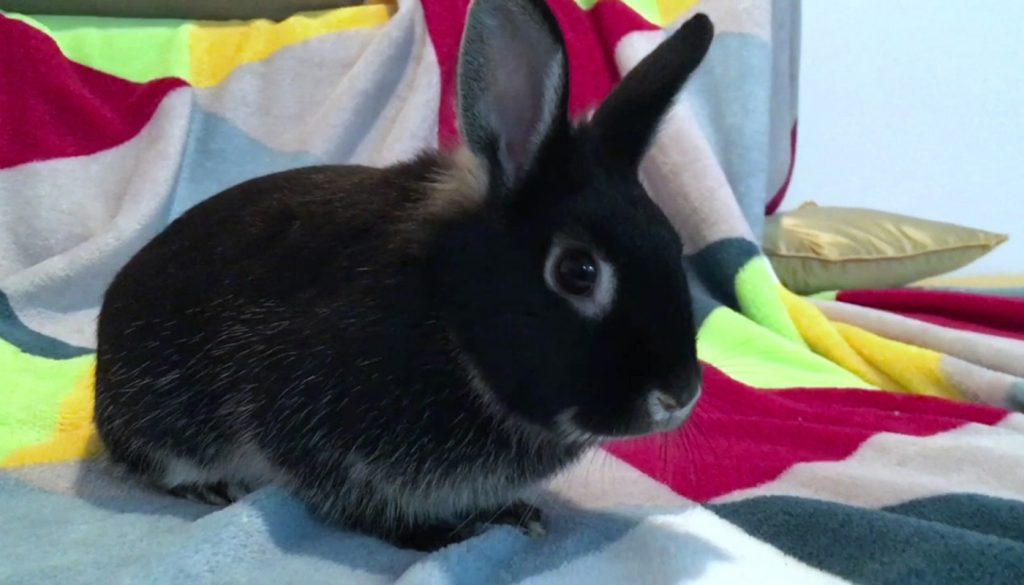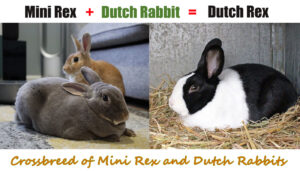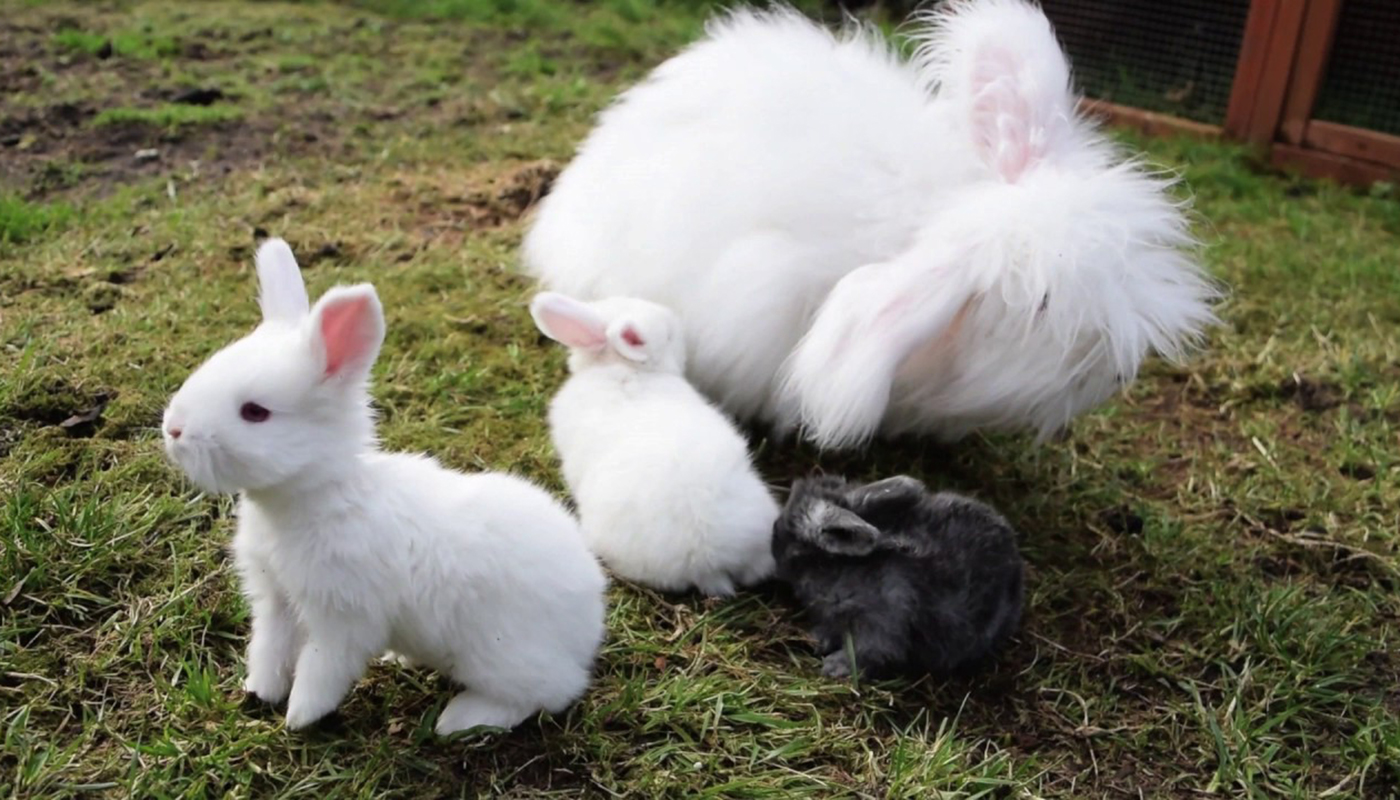
The Silver Marten rabbit breed is stiff competition at Rabbit shows and most of them are breeding to compete on the Rabbit show circuit.
These beautiful rabbits are intelligent and have an excellent nature and are easy to train. They are such fun little characters to keep as pets and are outstanding companion rabbits for the elderly and young alike.
BREED PROFILE OVERVIEW
|
|
|---|---|
| Breed Name: | Silver Marten |
| Other Names: | None |
| Country of Origin: | United States of America |
| Breed Purpose: | Fur, meat, pet, and exhibition |
| Breed Size: | Medium |
| Breed Weight: |
Female/Doe: 6 to 8 lbs. Male/Buck: 6 to 8 lbs. |
| Breed Color(s): | Black-silver, blue-silver, sable-silver, and chocolate-silver |
| Physical Appearance: |
They have a medium sized body that is slim and has a hare-type body type. They look like they are constantly on the alert.
Their faces are a small wedge-shape with medium length ears that do not touch in the center of the head and a bit of space between them. Their fur is soft to the touch and has a beautiful glossy polished look about it. |
| Temperament: | They are quite a timid rabbit breed and not recommended for children but if they are raised right, they are bundles of fun and can be very loving pets. |
BREED CHARACTERISTICS
- They have a decent sized litter and the females make very good mothers. Most rabbits have good maternal instincts and some breeds can be a bit testy and protective when they have young. They can also be uncharacteristically moody during mating season.
- Their young open their eyes around 7 to 14 days with an average of 10 days after birth. When their eyes have opened, they can start to be introduced to food such as alfa pellets and water.
- Even when the young start to eat it does not mean they are quite ready to be weaned from their mothers. The mothers will know when it is time to wean her young. It is important for the baby rabbit’s health, growth, immune system and development of a proper digestive system that they do not be removed from their mother for at least 8 weeks. They usually require her milk for a minimum of 8 weeks after birth.
- Their average lifespan is 5 to 8 years although there have been some breeds that have lived to 10 years with the proper care.
| Good Pets? | They can make very good pets and are recommend as companions for seniors, families with older children and first-time rabbit owners/breeders. They are good as both an outdoor and indoor pet rabbit. |
| Child Friendly? | Children should be supervised around animals and properly taught how to look after them and handle them. Rabbits can bite and scratch |
| Ideal Climate: | All climates – rabbits should never be left outside without proper shelter and housing that must be raised off the ground and predator safe. |
| Conservation Status: | Not Listed by the *ALC Status/Rarity: Not listed by the American Livestock Conservancy |
| Recognized by the ARBA? | Yes, there are a few color varieties that are accepted by the American Rabbit Breeders Association. These colors can be found under the Color section of this article. The breed was first accepted in 1924 with the Black and Silver variety. The Black and Chocolate Variety was accepted in 1927, the Blue and Silver variety in 1933 and the Sable variety was accepted in 1993. |
| Rabbit Associations/Clubs: | Unclear please check with the American Rabbit Breeders Association |
| Where to buy them? | Please check with the American Rabbit Breeders Association for more information of the breed another useful resource would be the American Rabbit Breeders Directory. |
| Note: *ALC stands for American Livestock Conservancy | |
GENERAL INFORMATION
For a slicker more glossy or shiny pelt, it is advisable to groom them every two to three weeks. During the molting season, it is advisable to groom rabbits every week to remove stray hairs.
Rabbits can be quite lively and energetic and need quite a bit of exercise and stimulation. It is a good idea to have a nice safe and secure run for them to play in and stretch their legs.
Toys, tubes and various obstacle courses for them is a good way to help them expend some of their energy and they are really fun to watch at play.
They are also sociable animals that do like to have a friend or two to play with.
Regular health and critter check once a week or every second week should become a habit. This will help to keep your rabbit(s) in excellent condition and health. Grooming does not require a lot if their coats are low maintenance. But it is a good idea to give them a nice gentle brushing to help remove any excess hairs regardless of the length of their coats.
It is also a good idea to check on the state of their teeth to ensure that they are not too long and causing the rabbit any discomfort.
Rabbits teeth never stop growing and getting fresh hay on a regular basis helps to control the growth of their teeth.
Rabbits need a good diet of quality pellets that are filled with their daily nutritional requirements. They do love dandelions, cabbage and various fruits as a nice tasty treat.
Rabbits that have quite a short coat are not really at risk for most of the digestive problems long fur seem to cause rabbits. They can still get other ailments such as flystrike, ear mites or overgrown teeth. These can all be controlled/maintained or avoided altogether with the proper health and grooming care of the rabbit(s).
If you have two rabbits and do not want to breed them it is possible to spay female rabbits and neuter male rabbits.
The females can be spayed as young as four months old, but vets prefer to wait until they are at least six months old before doing so.
The young males can be neutered as young as found months old.
Rabbits, just like any other pet, should be dewormed on a regular basis. Check with your local vet for proper guidance on the administering of worm medication to your animals.
HISTORY
In order to improve on the color of the Chinchilla rabbit breed, early rabbit breeders went about crossing breeds with the Chinchilla to try and introduce more pattern and color to the breed. They started off with trying to introduce black and tan bloodlines.
However, the offspring were black “sports” and the description that followed them was “strange little black rabbits”. The oddities from these offspring bred true and in 1924 the Silver Marten breed was accepted and recognized as its own new breed of rabbit.
A working standard was passed for the Silver Marten black and chocolate breed in 1927 and soon thereafter the first Silver Marten Rabbit Club was founded. In 1933 the Blue Silver Marten Rabbit Variety was accepted and in 1993 the Sable variety of the breed was recognized.
Video
USEFUL LINKS
- American Rabbit Breeders Association
- Fur Commission USA
- North American Meat Institute
- American Livestock Conservancy
- Animal Shelter (ASPCA)
- American Veterinary Medical Association
- American Animal Welfare Society
- American Animal Control
- American Society of Animal Science
- United States Department of Agriculture
- United States Department of Agriculture – Rabbit Meat
 Mini Polish Rabbits: Exploring the Charming Crossbreed of Polish x Mini Lop
Mini Polish Rabbits: Exploring the Charming Crossbreed of Polish x Mini Lop Argente Brun Rabbit – Everything You Need to Know
Argente Brun Rabbit – Everything You Need to Know Discover the Dutch Rex: A Charming Crossbreed of Mini Rex and Dutch Rabbits
Discover the Dutch Rex: A Charming Crossbreed of Mini Rex and Dutch Rabbits English Angora – Everything You Need to Know
English Angora – Everything You Need to Know Havana Rabbit – Everything You Need to Know
Havana Rabbit – Everything You Need to Know Holland Rex Rabbit: A Perfect Blend of Holland Lop and Rex Breed
Holland Rex Rabbit: A Perfect Blend of Holland Lop and Rex Breed 18 Rabbit Breeds to Keep as Pets
18 Rabbit Breeds to Keep as Pets Common Rabbit Health Problems and How to Spot Them Early
Common Rabbit Health Problems and How to Spot Them Early Holland Lop Rabbit – Everything You Need to Know
Holland Lop Rabbit – Everything You Need to Know Silver Fox Rabbit – Everything You Need to Know
Silver Fox Rabbit – Everything You Need to Know Dutch Angora Rabbit: The Perfect Blend of Charm and Fluff
Dutch Angora Rabbit: The Perfect Blend of Charm and Fluff Tan Rabbit – Everything You Need to Know
Tan Rabbit – Everything You Need to Know